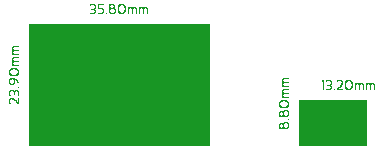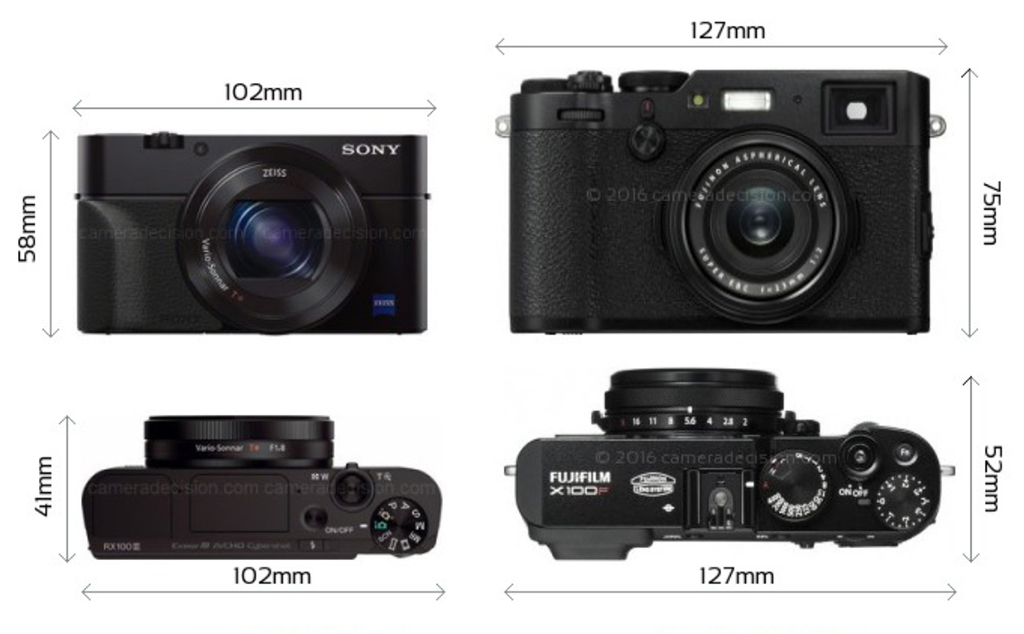A Superb Compact Camera: FujiFilm X100F
writer: russell j.t. dyer; posted: oct 2017; revised: sep 2018
Compact cameras have long been a favorite of mine: I owned a Canon Canonet compact film camera that I enjoyed very much, and my first digital camera was a Sony CyberShot DSC-W5. As the name suggests, compact cameras are small, making them portable. They also have generally a fixed lens that cannot be changed. This forces you to work with what you have, causing you to know well the lens and camera. It compels you to adhere to the one camera, one lens school of thought, which will make you a better photographer.
The engineering for a camera with a fixed lens — especially with a prime lens — is usually tight and dependable. When designing a camera, if the engineers don’t have to allow for many possibilities (i.e., interchangeable and zoom lenses), but can instead concentrate on a specific lens with one focal length, one set of factors, they can engineer a better camera. They can design an extremely precise lens and can compensate within the camera for any abberations. Plus, since all of the money you pay for the camera goes towards one set of components, they can use better quality materials.
The Value of Portability
In early 2016, although I had an excellent Leica camera (i.e., a Leica M9) and Leica M-mount lenses, I bought a small pocket camera, a Sony RX100-III. My reason for doing so was because my Leica M equipment is too bulky — albeit less so than the Canon DSLR equipment I owned previously. Partly because of that bulkiness, I’ve gotten away from taking pictures.
They say that the best camera is the one that you have with you — not the one you have at home. Portability can be an important feature if you’re not a professional photographer — or at least for non-professional use. The RX100-M3 is small enough that I’ve been keeping it in my jacket pocket or briefcase. My hope when buying it was that by keeping handy, I would take more pictures.
After a year of using the Sony RX100-M3, I now know that I do take more photos with a portable camera: about eighty percent more than each of the previous two years. This is encouraging. Plus, the smaller camera hasn’t effected the quality of my photos. In fact, I some ways I take better photos. It isn’t suitable for studio portraits or professional work, but it has been overall a good decision. Contentment, though, does not last long with me.
Image Sensor Comparisons
Although I’ve been pleased with the Sony, its image sensor is lacking. It has a 20-megapixel sensor, but it’s a small sensor — not as large as the Leica’s sensor.
In the image here you can see a relative size comparison between the image sensor of the Leica M9 and the Sony RX100-M3. The Leica M9 has a full-frame sensor. That means it’s about the same size as a frame of 35mm film, approximately 24 mm by 36 mm. Whereas, the Sony RX100-M3 has what’s known as a one-inch sensor, although the sensor is actually 8.8 mm by 13.2 mm. The Leica M9’s sensor is more than seven times the size of the Sony RX100-M3’s sensor. This affects the overall quality of images captured.
Searching for a New Compact Camera
Sony RX1R-II and Leica Q Cameras
Having proven that I do well with a compact camera, I am now willing to spend more money for a new one with a larger sensor — just as long as the camera is smaller than the Leica M9. I’m willing to relinquish some portability for better quality, but I know there is a limit on size in which the number of photos I take is greatly reduced.
There were many compact cameras I considered, but only a few interested me. Since I wanted a camera with a fixed prime lens, a larger sensor, and manual controls for exposure, the choices narrowed fast. From the list that remained, there were three that appealed to me: the Sony RX1R-II, the Leica Q, and the FujiFilm X100F.
The Sony RX1R-II has some amazing features, in particular a full-frame 42-megapixel sensor. However, the price is about $ 3300, which is more than I can afford, and it’s much larger. The width and height are each only a few millimeters more, but the depth is much greater. The depth of the Sony RX100-M3 is 41 mm, while the RX1R-II is 72 mm. That’s a fat camera, which will effect portability.
The Leica Q is fabulous. It’s overall build quality is excellent and it has a 24-megapixel, full-frame sensor. However, the price is $4,500 and its thickness is 83 mm — even fatter. I would be sacrificing plenty of money and portability. Nevertheless, if I had the money, I’d buy the Leica Q. It’s so impressive and it’s a sweet looking camera.
Having eliminated cameras that don’t have what I want and the ones that are too expensive or too large, that left the FujiFilm X100F camera.
The FujiFilm X100F
FujiFilm X100F
Manual Exposure Controls
The FujiFilm X100F has a classic film camera look to it, which is very appealing (see the first photo above). Part of the classic look comes from the manual controls for adjusting the exposure settings (see photo of camera’s top). There’s a knob for shutter speed and ISO sensitivity, as well exposure compensation. The lens aperture is set manually on the lens. The only other thing I need to adjust generally is the focus.
The lens isn’t made by Leica or Zeiss — which I would prefer — but it still has a good lens: a Fujinon f/2 35mm prime lens. Judging from the photos I’ve seen on the web, the lens is fine. The price is about $1300, which is about double what I paid for the Sony RX100-M3, but it’s not out of my price range.
Sony RX100-M3 and FujiFilm X100F Cameras
Size Comparison
As for dimensions, even though it has a larger sensor, it has what is known as a pancake, wide-angle lens. As the image here comparing the dimensions indicates, the width of the X100F is 127 mm compared to 102 mm of the RX100, the height is 75 mm compared to 58 mm, and the depth is 52 mm compared to 41 mm. Basically, it’s a little bigger all around, but not by much — not like the Sony RX1R or the Leica Q. So, it’s portable.
You can see in the image here with the side-by-side comparison of sensors, the sensor on the X100F is much larger. It’s not as large as a full-frame sensor, but it has an APS-C sensor, which measures 15.6 mm by 23.6 mm. Put another way, the area of the one-inch sensor is 116.16 square millimeters, while the APS-C sensor is 368.16 square millimeters. That’s more than tripple the size; it’s a major increase in image sensor. It’s also an increase in megapixels, 24 compared to 20. This will give me the quality boost for which I’m seeking.
Sony RX100-M3 and FujiFilm X100F Sensors
One-Inch Sensor vs. APS-C Sensor
Decided
The FujiFilm X100F has the basic quality and portability I want. It has manual exposure controls and is fairly small, with a good quality wide-angle lens. And it has a moderately large sensor for a compact camera, but not an excessively high price. It has everything I want and it’s still a portable compact camera. So, I’ve decided to buy one.
I’ll sell my Sony RX100-M3 — I expect to get almost what I paid for it since it’s been only a year and it’s in almost new condition. This will cover a large portion of the new purchase. But I’m not waiting: I already bought the X100F and love it. You’ll be able to see some of the photos I’ll take with it on the album page for the camera.





